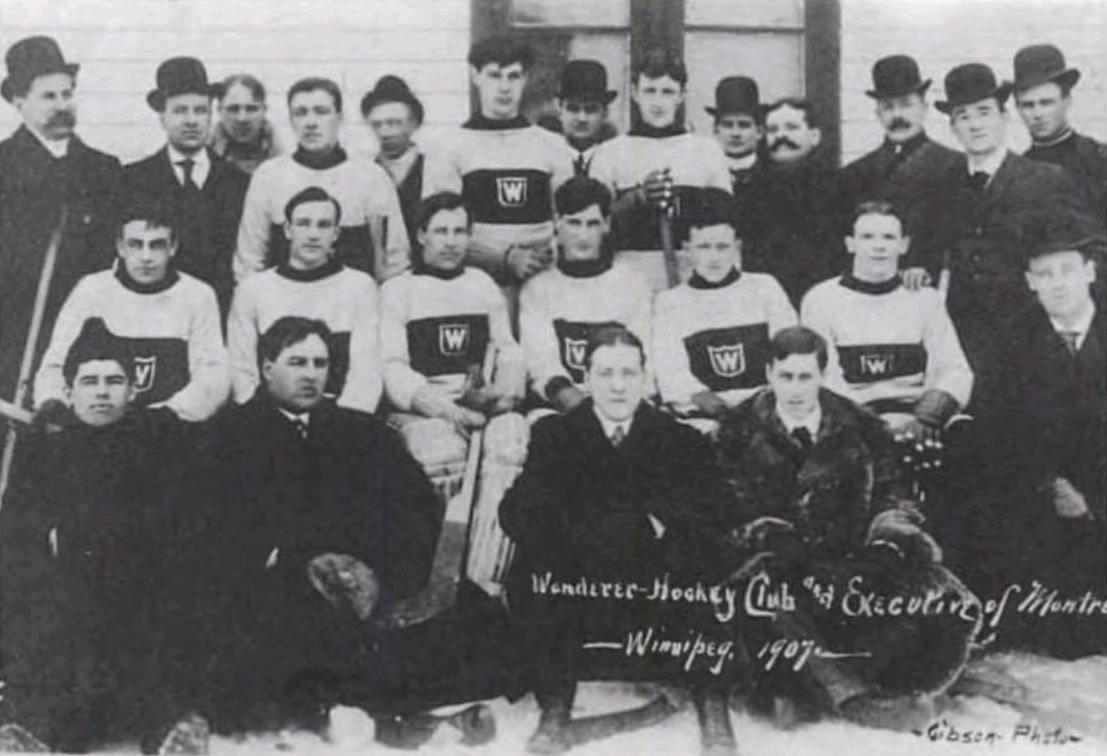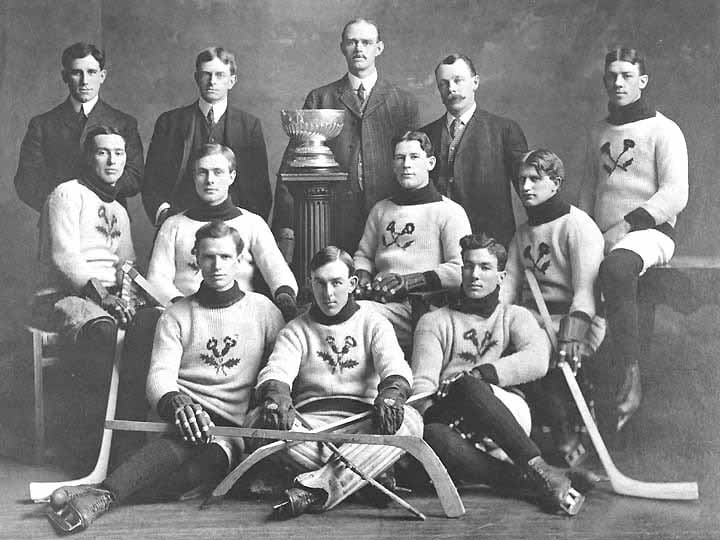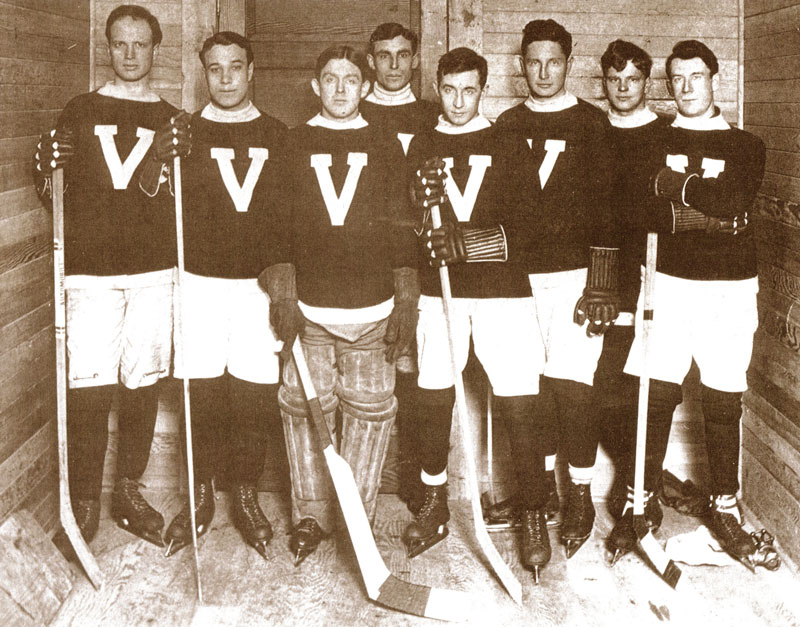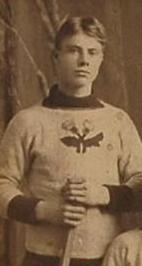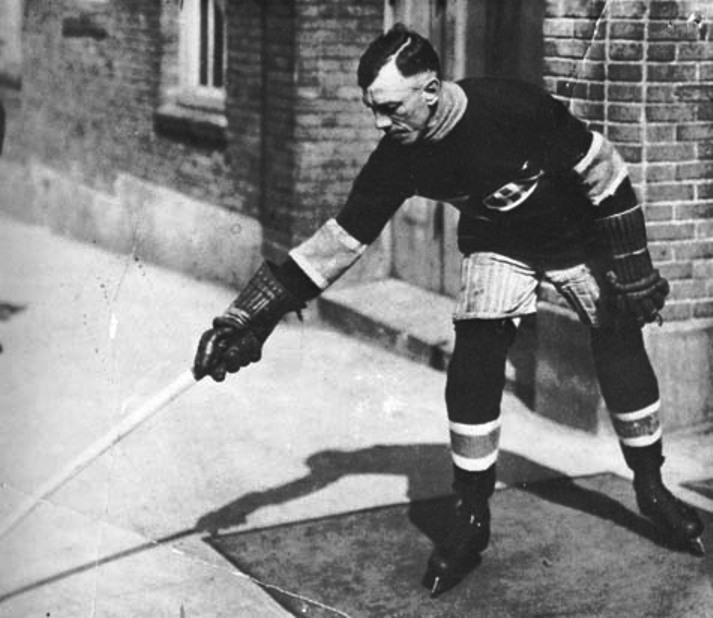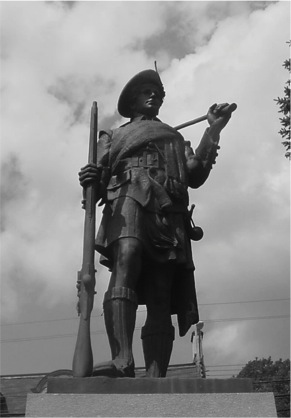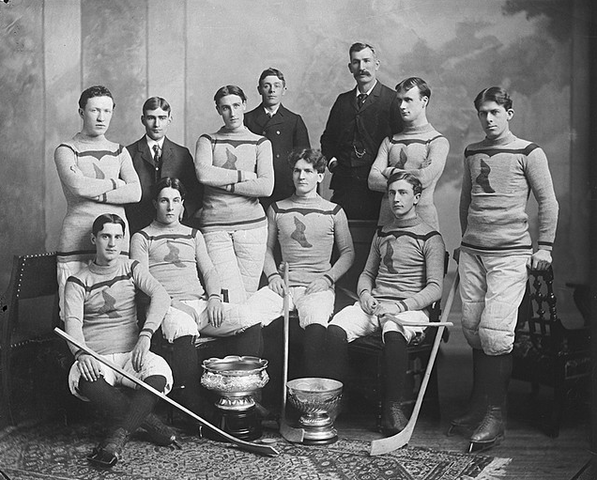|
1907 ECAHA Season
The 1907 ECAHA season was the second season of the Eastern Canada Amateur Hockey Association (ECAHA). Teams played a ten-game schedule. The Montreal Wanderers won the league championship going undefeated, with their only loss of the season coming in a Stanley Cup challenge series with Kenora. League business Executive * Fred McRobie (President) * Thomas D'Arcy McGee, Ottawa (1st Vice-President) * Gordon Blair, Quebec (2nd Vice-President) * Emmett Quinn, Shamrocks (Secretary-Treasurer) Nationals and Grand Trunk applied for franchises but did not get three-fourths approval. Rule changes * Teams could have professionals as well as amateurs * After a puck strikes a goalie, the rebound could now be played by the defending team without it being called offside * A player injured in the first half can sit for ten minutes and the other team has to take off a player. Regular season Frank McGee of Ottawa retired to pursue his government career. The Wanderers added two professi ... [...More Info...] [...Related Items...] OR: [Wikipedia] [Google] [Baidu] |
Eastern Canada Amateur Hockey Association
The Eastern Canada Amateur Hockey Association (ECAHA) was a men's amateur – later professional – ice hockey league in Canada that played four seasons. It was founded on December 11, 1905 with the top clubs from two other leagues: four from the Canadian Amateur Hockey League (CAHL) and two from the Federal Amateur Hockey League (FAHL). It was formed to maximize the revenues of a now popular spectator sport and help these amateur teams cope with professionalism in the sport. The league would shed its amateur status for the 1908 season, leading to the split between Canadian amateur ice hockey teams playing for the Allan Cup, and the professionals playing for the Stanley Cup. The league would itself dissolve in 1909 over a dispute between team owners over business issues. History ;Founding The CAHL held its regular meeting on December 9, 1905. At that meeting it was decided that amalgamation with the FAHL should be attempted. On December 11, it was announced that the ama ... [...More Info...] [...Related Items...] OR: [Wikipedia] [Google] [Baidu] |
Harry Smith (ice Hockey)
Harry Smith is the name of: Sports Baseball * Harry Smith (infielder) (1856–1898), American baseball player * Harry Smith (pitcher) (1889–1964), American baseball player * Harry Smith (1900s catcher) (1874–1933), British-born baseball player & manager * Harry Smith (1910s catcher) (1890–1922), American baseball player Cricket * Harry Smith (Australian cricketer) (1887–1916), Australian cricketer, played first-class cricket for Tasmania and Victoria * Harry Smith (cricketer, born 1884) (1884–1935), South African cricketer * Harry Smith (cricketer, born 1886) (1886–1955), English cricketer, for Derbyshire and Warwickshire * Harry Smith (cricketer, born 1890) (1890–?), English cricketer, played first-class cricket for Essex * Harry Smith (cricketer, born 1891) (1891–1937), English Test cricketer Football * Harry Smith (American football) (1918–2013), American football player * Harry Smith (footballer, born 1885) (1885–?), footballer for Stoke and Walsall ... [...More Info...] [...Related Items...] OR: [Wikipedia] [Google] [Baidu] |
Art Ross
Arthur Howe Ross (January 13, 1885 – August 5, 1964) was a Canadian professional ice hockey player and executive from 1905 until 1954. Regarded as one of the best defenders of his era by his peers, he was one of the first to skate with the puck up the ice rather than pass it to a forward. He was on Stanley Cup championship teams twice in a playing career that lasted thirteen seasons; in January 1907 with the Kenora Thistles and 1908 with the Montreal Wanderers. Like other players of the time, Ross played for several different teams and leagues, and is most notable for his time with the Wanderers while they were members of the National Hockey Association (NHA) and its successor, the National Hockey League (NHL). In 1911 he led one of the first organized player strikes over increased pay. When the Wanderers' home arena burned down in January 1918, the team ceased operations and Ross retired as a player. After several years as an on-ice official, he was named head coach of the ... [...More Info...] [...Related Items...] OR: [Wikipedia] [Google] [Baidu] |
Tommy Phillips
Thomas Neil Phillips (May 22, 1883 – November 30, 1923) was a Canadian professional ice hockey left winger. Like other players of his era, Phillips played for several different teams and leagues. Most notable for his time with the Kenora Thistles, Phillips also played with the Montreal Hockey Club, the Ottawa Hockey Club, the Toronto Marlboros and the Vancouver Millionaires. Over the course of his career Phillips participated in six challenges for the Stanley Cup, the championship trophy of hockey, winning twice: with the Montreal Hockey Club in 1903 and with the Kenora Thistles, which he captained, in January 1907. Following his playing career, Phillips worked in the lumber industry until his death in 1923. One of the best defensive forwards of his era, Phillips was also known for his all-around skill, particularly his strong shot and endurance, and was considered, alongside Frank McGee, one of the two best players in all of hockey. His younger brother, Russell, als ... [...More Info...] [...Related Items...] OR: [Wikipedia] [Google] [Baidu] |
Tom Hooper (ice Hockey)
Charles Thomas Hooper (November 24, 1883 – March 23, 1960) was a Canadian professional ice hockey player. He played for the Kenora Thistles, Montreal Hockey Club, and Montreal Wanderers The Montreal Wanderers were an amateur, and later professional, ice hockey team based in Montreal. The team played in the Federal Amateur Hockey League (FAHL), the Eastern Canada Amateur Hockey Association (ECAHA), the National Hockey Association .... Hooper was a Stanley Cup winner with the Thistles in 1907 and the Wanderers in 1908. Noted for his skating speed, checking and stick-handling ability, he was inducted into the Hockey Hall of Fame in 1963. Playing career Hooper was born in the village of Rat Portage, later renamed Kenora, in north-western Ontario, Canada. He first played organized hockey for a local high school. The high school team was very talented, good enough to defeat Rat Portage's senior ice hockey team. In 1896, at the age of thirteen, Hooper joined the Rat Portage senio ... [...More Info...] [...Related Items...] OR: [Wikipedia] [Google] [Baidu] |
Joe Hall (ice Hockey)
Joseph Henry "Bad Joe" Hall (May 3, 1881 – April 5, 1919) was a Canadian professional ice hockey player. Known for his aggressive playing style, Hall played senior and professional hockey from 1902 to 1919, when he died as a result of the Spanish flu pandemic. He won the Stanley Cup twice with the Quebec Bulldogs and once with the Kenora Thistles, and became hospitalized while participating in the 1919 Stanley Cup Finals, which were cancelled four days before he died. Career Hall was born in Milwich in Staffordshire, England. He moved with his family to Canada in 1884, initially going to Winnipeg, Manitoba before settling in Brandon, Manitoba. Details of Hall's life before 1902 are otherwise scarce. Nicknamed "Bad Joe" for his aggressiveness on the ice, he played in the Manitoba Hockey Association (MHA) with the Brandon Wheat City Hockey Club, Winnipeg Rowing Club and Kenora Thistles between 1902 and 1907, and in the first fully professional league, the International Prof ... [...More Info...] [...Related Items...] OR: [Wikipedia] [Google] [Baidu] |
Hockey Hall Of Fame
The Hockey Hall of Fame (french: Temple de la renommée du hockey) is a museum and hall of fame located in Toronto, Ontario, Canada. Dedicated to the history of ice hockey, it holds exhibits about players, teams, National Hockey League (NHL) records, memorabilia and NHL trophies, including the Stanley Cup. Founded in Kingston, Ontario, the Hockey Hall of Fame was established in 1943 under the leadership of James T. Sutherland. The first class of honoured members was inducted in 1945, before the Hall of Fame had a permanent location. It moved to Toronto in 1958 after the NHL withdrew its support for the International Hockey Hall of Fame in Kingston, Ontario, due to funding issues. Its first permanent building opened at Exhibition Place in 1961. The hall was relocated in 1993, and is now in Downtown Toronto, inside Brookfield Place, and a historic Bank of Montreal building. The Hockey Hall of Fame has hosted International Ice Hockey Federation (IIHF) exhibits and the IIHF Hall ... [...More Info...] [...Related Items...] OR: [Wikipedia] [Google] [Baidu] |
Montreal Arena
The Montreal Arena, also known as Westmount Arena, was an indoor arena located in Westmount, Quebec, Canada on the corner of St. Catherine Street and Wood Avenue. It was likely one of the first arenas designed expressly for hockey, opening in 1898. It was the primary site of amateur and professional ice hockey in Montreal until 1918. Description Opened on December 31, 1898, it held 10,000 people, 4300 seated. It held a refreshment buffet and smoking rooms, with rugs available for rental to sit on. It is likely the third arena designed expressly for ice hockey, after the St. Nicholas Rink in New York City, and the Dey's Skating Rink in Ottawa, which both opened in 1896. The ice rink ends were not squared off but rounded off. The ends were somewhat semi-circular, possibly the first design of its kind. A puck could be shot along the outside rim, slide along the corners, pass behind the goal and come out the other side. That type of shot is common in hockey today and is called " ... [...More Info...] [...Related Items...] OR: [Wikipedia] [Google] [Baidu] |
New Glasgow, Nova Scotia
New Glasgow is a town in Pictou County, in the province of Nova Scotia, Canada. It is situated on the banks of the East River of Pictou, which flows into Pictou Harbour, a sub-basin of the Northumberland Strait. The town's population was 9,075 in the 2016 census. New Glasgow is at the centre of the province's fourth largest urban area; the population of the New Glasgow census agglomeration in the 2016 census was 34,487. The New Glasgow census agglomeration includes the smaller adjacent towns of Stellarton, Westville, and Trenton as well as adjacent rural areas of the county. History Scottish immigrants, including those on the ship Hector in 1773, settled the area of the East River of Pictou during the late 18th and early 19th centuries. Deacon Thomas Fraser first settled the area at the head of navigation on the East River of Pictou in 1784. The settlement was officially named "New Glasgow", after Glasgow in Scotland, in 1809, the same year its first trading post was deve ... [...More Info...] [...Related Items...] OR: [Wikipedia] [Google] [Baidu] |
Montreal Shamrocks
The Montreal Shamrocks were an amateur, later professional, and then amateur again men's ice hockey club in existence from 1886 to 1924, based in Montreal, Quebec, Canada. They were spun off from the Montreal Shamrocks lacrosse club. Starting off as an independent club and briefly playing in the AHAC, the team became a permanent fixture in the early amateur leagues, when in 1895 they merged with the Montreal Crystals and replaced them midway through the 1895 season in the AHAC. The club eventually went professional and played one season in the National Hockey Association (NHA), the predecessor of today's National Hockey League. Afterwards, with the cost of professionalism being too expensive, the team reverted to an amateur club and played into the 1920s in various amateur leagues. Their greatest success came when they won back to back Stanley Cups at the turn of the century in 1899 and 1900. Team history The Shamrocks were founded on December 15, 1886 at a meeting of the Shamr ... [...More Info...] [...Related Items...] OR: [Wikipedia] [Google] [Baidu] |
Quebec Bulldogs
The Quebec Bulldogs (french: Bulldogs de Québec) were a men's senior-level ice hockey team based in Quebec City. The team was officially known as the Quebec Hockey Club (french: Club de hockey de Québec), and later as the Quebec Athletic Club (french: Club athlétique de Québec). One of the first organized ice hockey clubs, the club debuted in 1878 with the opening of the Quebec Skating Rink. The club continued as an amateur team through various leagues, eventually becoming professional in 1908. The club would play in the National Hockey Association (the forerunner to the NHL) and the National Hockey League. In 1920, the team moved to Hamilton, Ontario and became the Hamilton Tigers. Franchise history Amateur roots, 1878–1909 The Quebec Hockey Club was founded in 1878, after the construction of the Quebec Skating Rink in 1877. The club consisted of Anglo-Canadian players. Play was by exhibition only, against teams drawn from the club members or visiting teams from Montrea ... [...More Info...] [...Related Items...] OR: [Wikipedia] [Google] [Baidu] |
Montreal Hockey Club
The Montreal Hockey Club of Montreal, Quebec, Canada was a senior-level men's amateur ice hockey club, organized in 1884. They were affiliated with Montreal Amateur Athletic Association (MAAA) and used the MAAA 'winged wheel' logo. The team was the first to win the Stanley Cup, in 1893, and subsequently refused the cup over a dispute with the Montreal Amateur Athletic Association. The club is variously known as 'Montreals', 'Montreal AAA' and 'Winged wheel' in literature. The team played in several early ice hockey leagues, including the Amateur Hockey Association of Canada from 1886 until 1898, winning its championship seven times. The team competed in purely amateur leagues until 1906. After two seasons of playing with professionals, the club left its league, the Eastern Canada Amateur Hockey Association to continue playing in amateur competition. It would go on to win the Allan Cup in 1930, the successor of the Stanley Cup as the trophy given to Canadian amateur hockey champi ... [...More Info...] [...Related Items...] OR: [Wikipedia] [Google] [Baidu] |
